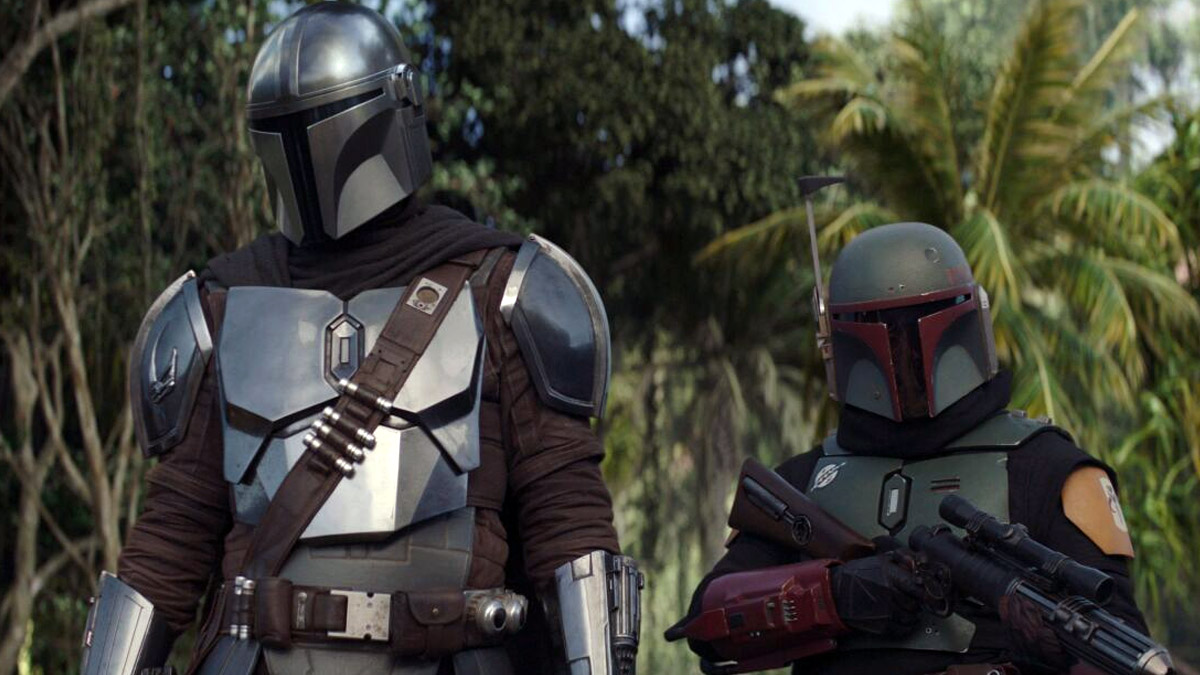If anything connects the Jedi and the Sith, it’s the Mandalorians. A conflict between the Jedi ended in the Great Cataclysm, which left the green grass of Mandalore burning and its cities encased in protective bubbles. The Empire’s uppercut followed that sucker punch. At the command of the Emperor, the Sith lord Darth Sidious, Imperial forces set about wiping out those cities and their residents once and for all.
We know some survived thanks to The Mandalorian, the series that carries the weight of explaining and expanding the warrior culture in modern Star Wars. Despite its current emphasis on the consequences of the Empire’s actions, creator Jon Favreau tackled the difference between the Mandalorians and Jedi in a recent interview. He revealed that the creatives behind the show are drawing on some of the franchise’s tried and tested methods to piece the culture together. Part of that is making them distinct from the Jedi.
Talking to ScreenRant, Favreau explained, “The differentiation is just enough to differentiate it from the Jedi to the Mandalorians because they were historically enemies.” That’s a broad sweep in a show that has enjoyed muddying the waters like a giant and predatory crocodile-turtle. Din Djarin encountered the Force-sensitive Grogu, his companion, at the end of the first chapter. The chance that the show would explore a galaxy beyond Jedi was further diluted by the surprising number of Jedi who popped up, including Ahsoka Tano and Luke Skywalker.
Favreau’s words suggest that the Jedi presence isn’t just fan service, but a deliberate opposition to help develop the culture. The Mandalorian has revealed the differences and similarities that separate the Jedi and Mandalorians (even beyond the orthodox Children of the Watch Djarin was inducted into).
Those differences and widespread enmity are evident in their different ideologies. The Jedi are a monastic order with a belief in peace, justice, and the Force’s omnipresent universal and spiritual power. In contrast, Mandalorian culture is based on war, combat, and honor. Both welcome other species and have creeds and, yes, catchphrases they live by, but the result is quite different. While the Jedi channel any necessary combat through the elegant lightsaber, the conquering, bounty-hunting Mandalorians rely on custom weaponry and improvisation.
It’s no mean feat to expand on the warrior culture that for many years was reduced to “that Boba Fett sure is cool.” Perhaps it’s no surprise that the modern curators of Mandalorian history are still drawing on Star Wars creator George Lucas’ original ideas ⏤ or more specifically, his approach to developing those ideas.
Favreau continued by saying, “But we do draw from a lot of things. Again, the study of myth and story within cultures all points to certain commonalities, and we try to draw from the same inspirations as George did.”
Lucas’ original idea for the Mandalorians changed markedly while he developed the second movie, Star Wars: Episode V — The Empire Strikes Back. The warriors were initially envisaged as heavily armored troopers dedicated to opposing Jedi. The canon has expanded to diversify this opposition ⏤ and not just in Boba Fett’s various attempts to befriend and beat them.
As we know, a significant moment of peace had a more substantial impact on the Mandalorians than the Jedi. Tarre Vizsla was a human Mandalorian and the first to be accepted into the Jedi Order as a child. Founding House Vizsla, he brought control and peace to Mandalore, but it didn’t survive his death. The Darksaber he created approximately a millennia before The Mandalorian became a totemic symbol of leadership for the culture.
With their blades, pistols, and culture, we can chalk up western and samurai movies as huge influences on these warriors. We can also expect other classical influences to be dug out for this key and growing part of the Star Wars universe. Ancient Greece, the legacy of the Crusades, the fate of ancient independent cities, and infamous civil wars may even have their own bearings.
In some ways, that consistency is music to Star Wars fans’ ears, but Lucas’ cultural draws weren’t always appreciated and sometimes proved controversial. But as we look to the future of Mandalore, it’s clear that the creators intend to keep to their own Star Wars creed of basing it on humanity’s past.
